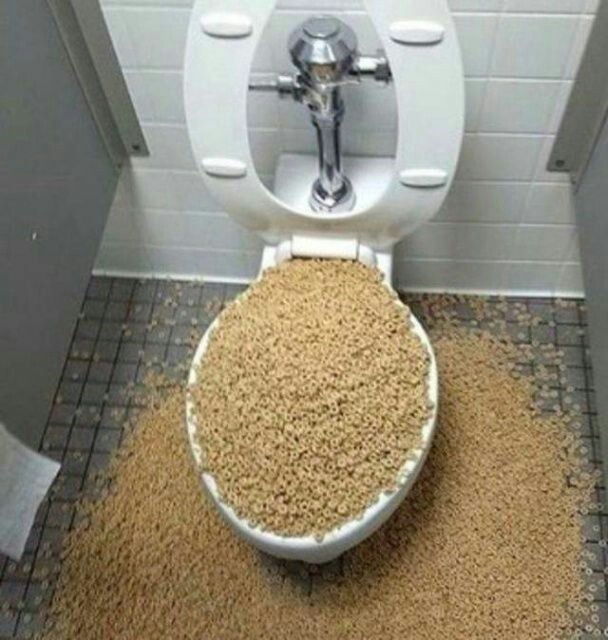Are You Permitted to Flush Food Down the Toilet?
Are You Permitted to Flush Food Down the Toilet?
Blog Article
The content down below about Think Twice Before Flushing Food Down Your Toilet is exceedingly attention-grabbing. Read it for yourself and figure out what you think about it.

Intro
Many people are commonly faced with the dilemma of what to do with food waste, particularly when it concerns leftovers or scraps. One typical inquiry that occurs is whether it's alright to flush food down the toilet. In this short article, we'll delve into the reasons why individuals might consider purging food, the consequences of doing so, and different techniques for proper disposal.
Reasons individuals might take into consideration flushing food
Lack of recognition
Some individuals may not understand the potential harm triggered by purging food down the commode. They might mistakenly believe that it's a harmless practice.
Benefit
Flushing food down the toilet might seem like a fast and very easy solution to disposing of undesirable scraps, specifically when there's no close-by trash bin available.
Negligence
In some cases, people might just choose to flush food out of large laziness, without thinking about the repercussions of their actions.
Consequences of flushing food down the bathroom
Ecological effect
Food waste that winds up in rivers can contribute to air pollution and harm water environments. In addition, the water used to flush food can stress water sources.
Pipes concerns
Purging food can lead to stopped up pipes and drains, causing costly pipes repair work and troubles.
Kinds of food that ought to not be flushed
Coarse foods
Foods with fibrous appearances such as celery or corn husks can obtain tangled in pipelines and trigger clogs.
Starchy foods
Starchy foods like pasta and rice can soak up water and swell, causing obstructions in pipes.
Oils and fats
Greasy foods like bacon or cooking oils must never ever be flushed down the bathroom as they can solidify and cause obstructions.
Proper disposal approaches for food waste
Using a waste disposal unit
For homes outfitted with garbage disposals, food scraps can be ground up and purged via the plumbing system. However, not all foods are suitable for disposal in this way.
Recycling
Particular food packaging products can be recycled, decreasing waste and decreasing environmental effect.
Composting
Composting is an eco-friendly means to get rid of food waste. Organic products can be composted and made use of to improve soil for gardening.
The value of proper waste management
Reducing environmental harm
Correct waste monitoring practices, such as composting and recycling, help minimize air pollution and preserve natural deposits for future generations.
Shielding plumbing systems
By avoiding the method of flushing food down the bathroom, homeowners can avoid pricey plumbing repair work and keep the honesty of their plumbing systems.
Conclusion
To conclude, while it might be alluring to purge food down the bathroom for convenience, it's important to recognize the potential effects of this action. By adopting appropriate waste administration methods and dealing with food waste sensibly, individuals can contribute to healthier pipes systems and a cleaner atmosphere for all.
FLUSH FOOD DOWN THE TOILET?
FLUSHING FOOD CAN CAUSE BLOCKED DRAINS IN YOUR HOME
All of the plumbing fixtures in your home are connected to the same sewer pipe outside of your home. This outdoor sewer pipe is responsible for transporting all the wastewater from your home to the Council sewer mains. Even small pieces of food that go down the kitchen sink can cause problems for your sewer. It should therefore be obvious that flushing larger bits of food, such as meat, risks a clog in either the toilet itself or the sewer pipes. Flushing greasy food is even more problematic because oil coagulates when it cools, coating the interior lining of your pipes.
THE TOILET IS NOT A BIN
Food isn’t the only thing that people shouldn’t be flushing down the toilet. People use the toilet to dispose of all kinds of things such as tampons, makeup wipes, dental floss, kitty litter and even underwear. Water goes to great lengths to educate residents about the high costs and stress placed on wastewater treatment systems simply from people flushing the wrong stuff down the toilet. It costs taxpayers millions of dollars each year, and homeowners thousands in blocked drain repairs.
FLUSHING FOOD IS A WASTE OF WATER
Flushing food is a waste of our most precious resource - water. In June this year Level 1 water restrictions were introduced to protect water supply from drought conditions. Much of New South Wales continues to be affected by prolonged drought with recent figures revealing up to 97 per cent of the state remains in drought. Depending on whether you have a single or dual flush toilet, every single flush uses between five and 11 litres of water. In the current climate this is a huge amount of water to be wasting on flushing food that should be placed in the bin (or better yet, the compost).
https://www.jabplumbingsolutions.com.au/blog/can-you-flush-food-down-the-toilet

Do you really like more info about Flushing Food Down the Toilet?? Write a comment further down. We will be delighted to listen to your opinions about this write up. In hopes that you visit us again soon. Enjoyed reading our write up? Please quickly share it. Let other people discover it. I thank you for reading our article about Flushing Food Down the Toilet?.
Go Deal Now Report this page